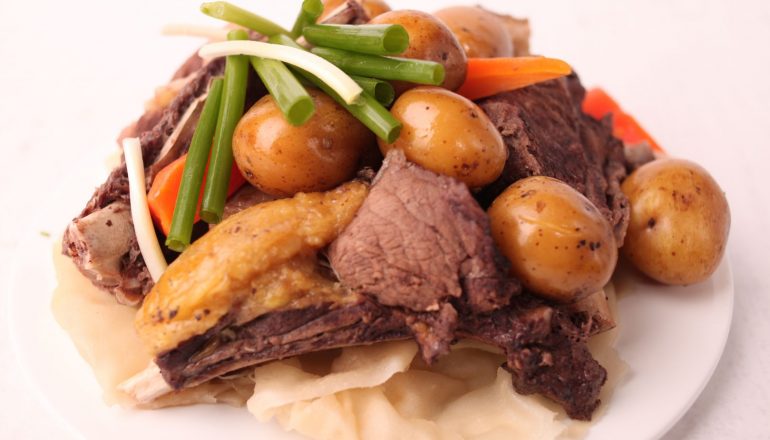There are many different dishes you can eat in Mongolia. The vast country has many different ethnicities and specialties following that. However, whichever area you decide to visit in the country, you’ll be sure to encounter the following 5 delicious dishes. The locals love it and make it year round!
Here are the 5 most common Mongolian dishes that will make your mouth water:
1. Buuz
The Buuz (Бууз) is Mongolia’s most favorite meal. Locals love to eat it and prepare it for their guests during Tsagaan sar (the Lunar New Year), New Years eve, Birthdays or just for an occasion. One of the reasons why it’s so popular lies in it being very easy to make and eat.
The Buuz is a small round dumpling-like steamed dish that is wrapped in thin dough, stuffed with garlic, onion and salt seasoned mutton or beef, and a little fat for juicy soup. They then often paired with salads or pickles or sauce.
Every family makes their Buuz with their own recipe and a special touch. So be sure to definitely try one if you have the chance.
HOW TO ENJOY: Eat it hot from the steamer and it will taste the best! A trick to enjoying Buuz to the fullest (while not spoiling your clothes) is to take one by hand, pinch it between your thumb and index finger, then take a bite from the side. Slurp all the juicy soup first, and enjoy!
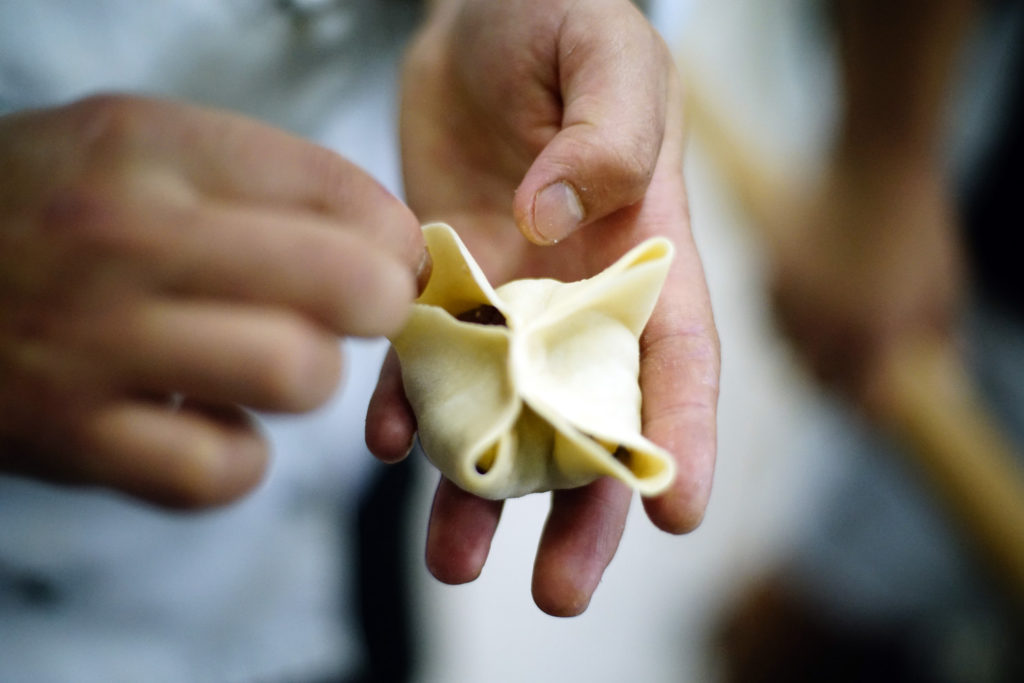
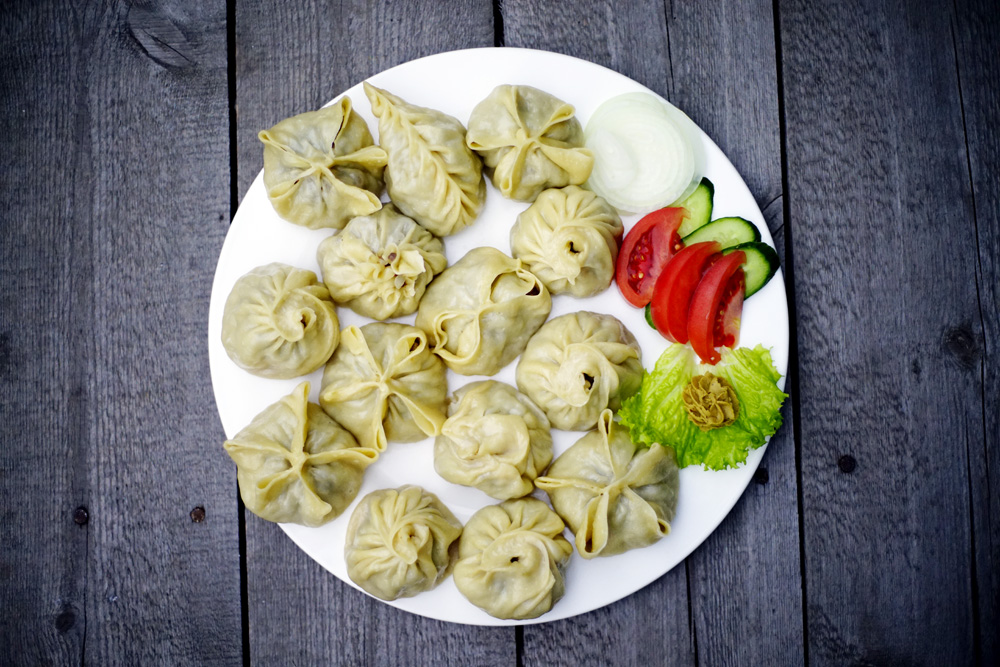

2. Khuushuur
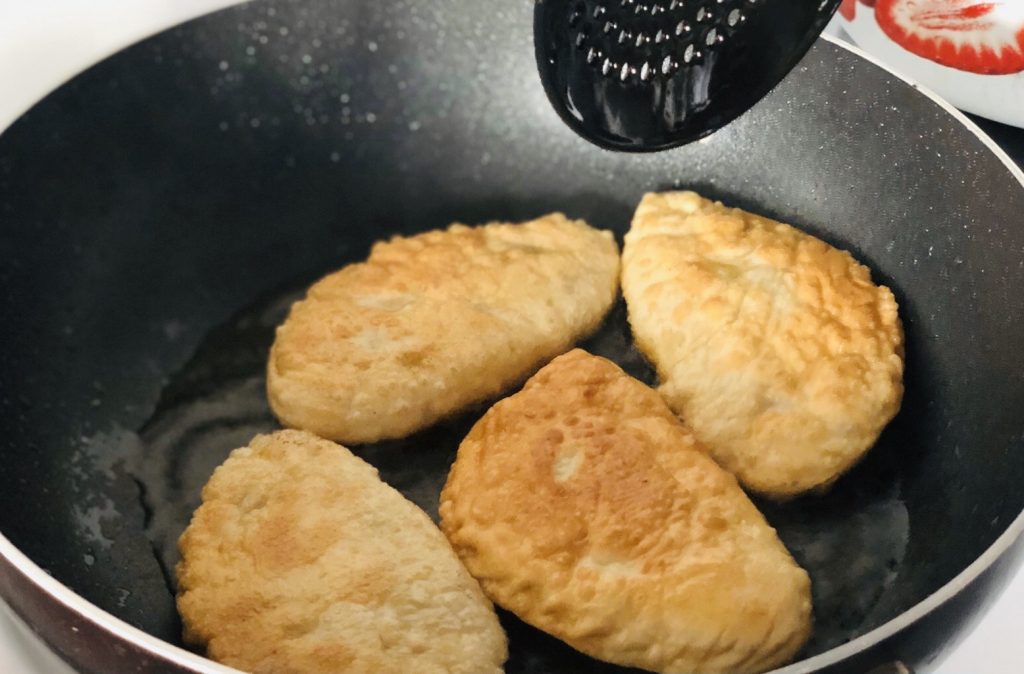
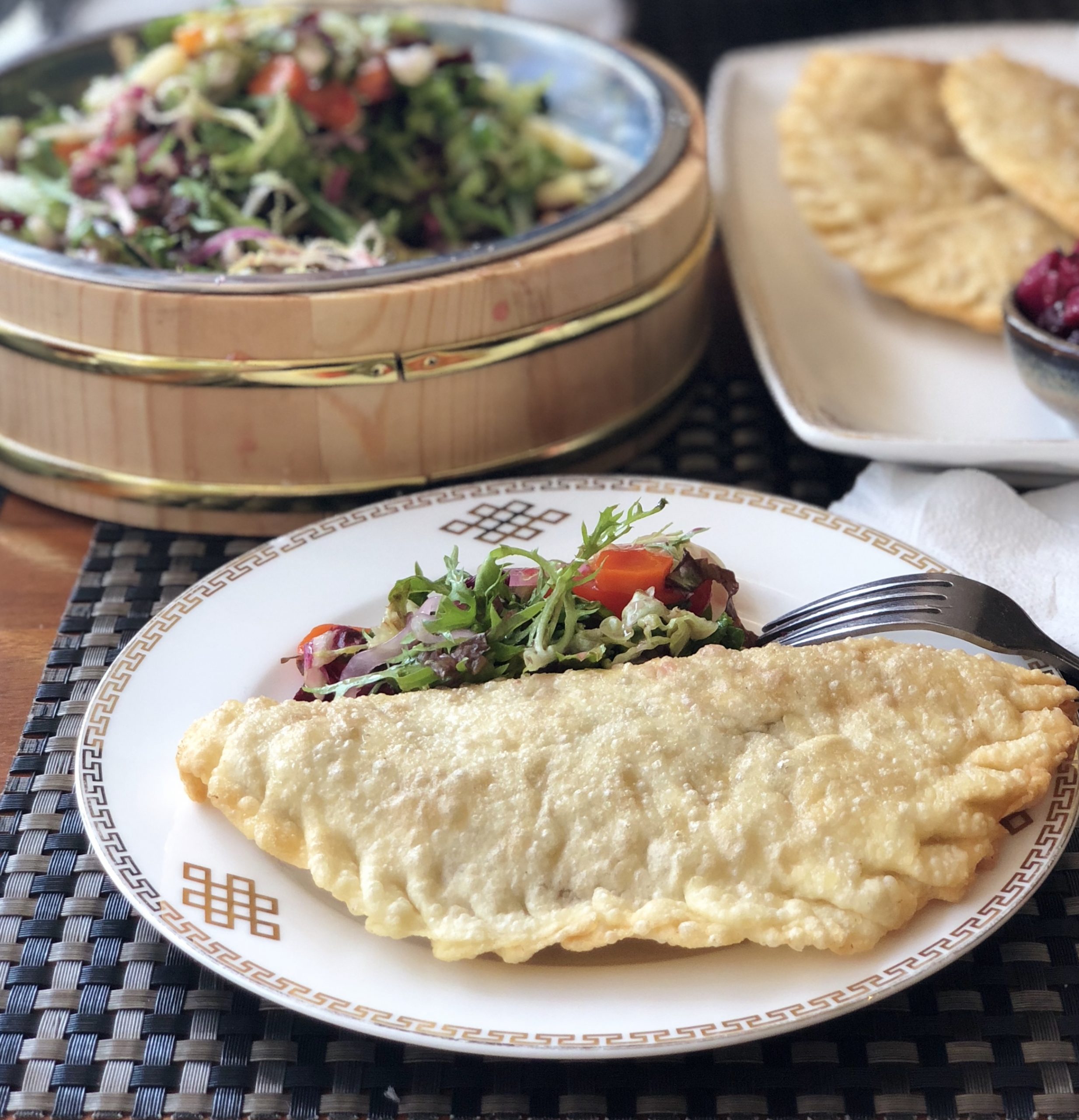
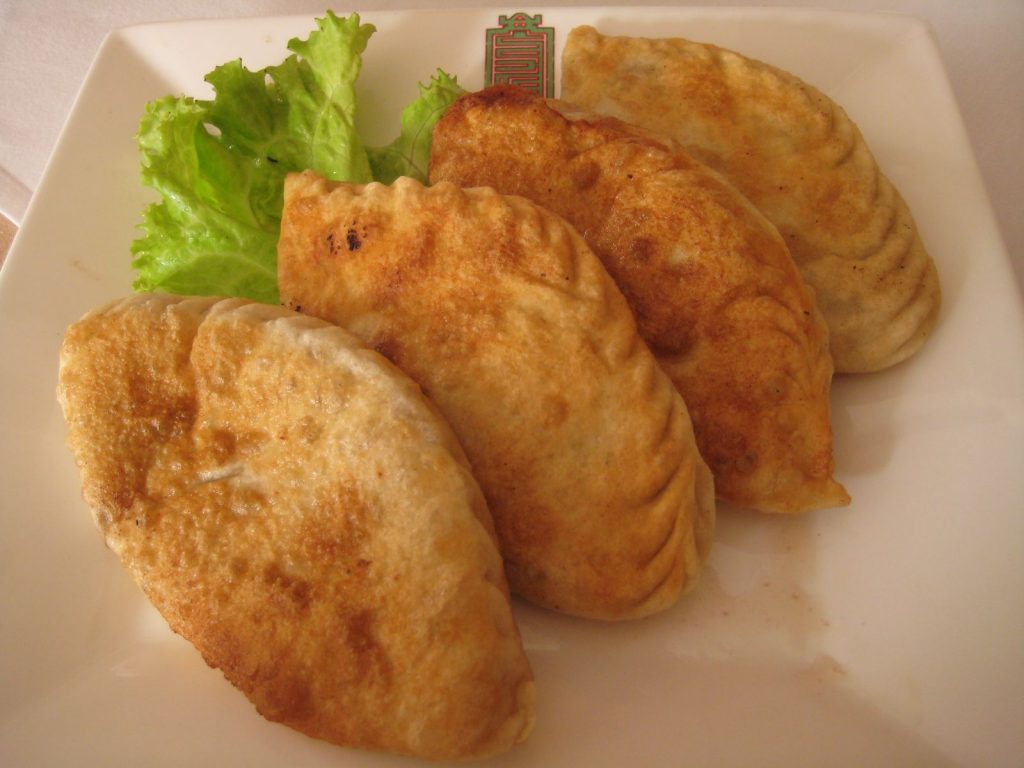

Another popular Mongolian meal, and quite similar to Buuz, is Khuushuur (Хуушуур). And often like Buuz, people commonly prepare it for their family and friends during festivals and picnics. Therefore, the season you might encounter Khuushuur the most will probably be summer, especially on Naadam (a National summer festival).
The Khuushuur is made with same ingredients as Buuz, but with a different technique and cooked or fried in oil rather than steamed. They are flat in figure and can be roughly the same size as your palm or slightly smaller. There are also round, flat disc-like Khuushuurs called Round Khuushuur or “Dugui Khuushuur”
Fun fact: “Naadmiin Khuushuur” or Khuushuur of Naadam festival is famous for its taste and shape, compared to home-made ones. Mongolians often visit the Naadam stadium to taste the dish, and will walk between each stall having a taste then choose the best tasting ones for take-away. The charm of Naadam is definitely the Khuushuur.
HOW TO ENJOY: Since they are fried, be careful not to eat them too soon. Khuushuur also have a lot of soup inside them so be sure to slurp it all first! And of course, Mongolians always eat Khuushuur by hand. But there’s a reason behind it: Locals believe each finger tip is connected to vital organs in a body and eating Khuushur by hand and keeping those fingers warm is beneficial for the overall health. You should try eating like that, as well!
3. Tsuivan
Another common dish you’ll encounter in every Mongolian family household or in the menu of a local restaurant or diner is Tsuivan (Цуйван). It’s a kind of fried mixture of steamed noodles, meat and vegetables. The Tsuivan is a really easy-to-make dinner, that probably each household prepares it several times a month.
Modern families often make it in a frying pan or a normal pan, however traditionally and more commonly in the countryside, locals cook it in a wok and on a fire. This gives the dish a distinct, slightly scorched and delicious taste. In general, when making the dish, one must first fry all the meat and vegetables in oil, then add a bit of water then scatter the noodles on top to steam it until the water evaporates.
Fun fact: Mongolians have a special word for cooking tsuivan: “Tsuivan segserekh”, meaning to shake the Tsuivan. This means figuratively to shake the wok or pan after it’s done cooking to distribute all the ingredients evenly.
HOW TO ENJOY: Lucky for you there aren’t any special things you need to know or do to enjoy this tasty meal. Still, don’t forget to have a drink close-by, or you might feel a bit dry.


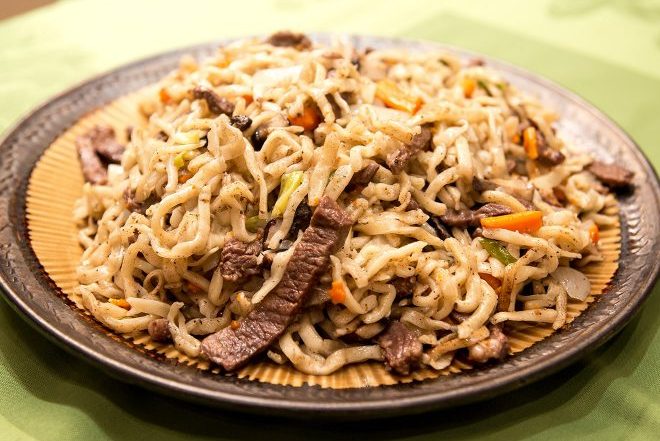
4. Khorkhog
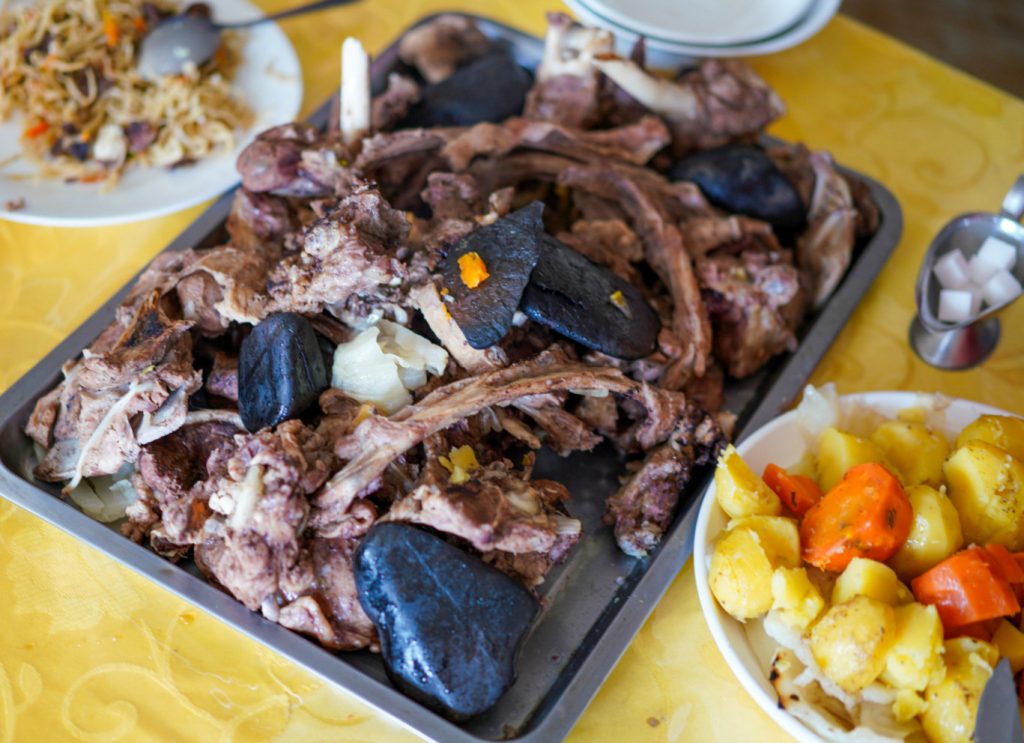
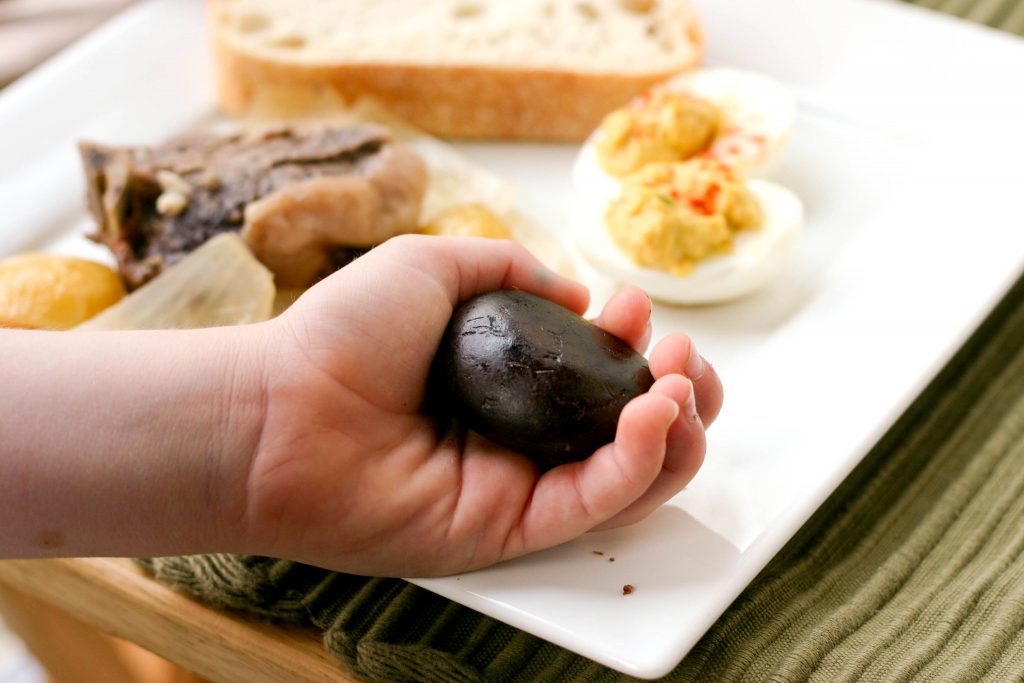

A hearty meal, Khorkhog (Хорхог) consists of big mutton pieces, some vegetables like potatoes & carrots, sometimes steamed Mongolian noodles and heated river stones. It is a festive and family meal consumed more commonly in the countryside during trips, or a visit to a family of nomads in the steppes.
The way it’s prepared is to heat river stones on fire beforehand, while cooking the pieces of meat and vegetables in a cauldron. Then the steaming hot stones are put inside the cauldron to finish cooking everything. The meat has then a scorched and soft taste, delicious!
HOW TO ENJOY: You can eat the dish however you like, by hand or use cutleries, but there’s a special way to enjoy the meal that is not at all connected to eating. It’s the hot river stones! Don’t worry, you don’t eat them, but you should try holding them in your hands. As mentioned before, Mongolians love to take warm/hot things in their hands because its believed to boost health, especially during winters. Commonly, the locals will hold one stone each, shifting between hands, then once the stone is warm, you can put it away, wipe your hands and start eating!
5. Chanasan Makh
At last, but definitely not the least, Chanasan Makh (Чанасан мах) is a pretty straightforward meal. Mongolians love to prepare it year long and you’ll definitely encounter it at a local family’s during the Tsagaan Sar, Lunar New Year.
It’s a slow cooked meat in a broth, seasoned with onions and salt, then added vegetables and wide noodles. The meat is commonly mutton and beef, but can be goat or horse sometimes. After everything is done cooking, the tender meat and the vegetables are put on a platter and served, with the broth in a different bowl. Basically, it’s a deconstructed noodle soup.
HOW TO ENJOY: Since it’s a big meal, it’s often on a big plate for sharing. From it, you can take a piece of meat, vegetables and noodles onto your own plate and enjoy. If you’re at a Mongolian family’s, the head of the family will often cut up the big chunks of meat into smaller sizes and put it on another plate for the family to enjoy. You can drink your broth or use it as a dip for the meat. Whatever you choose to do, it’ll be delicious!
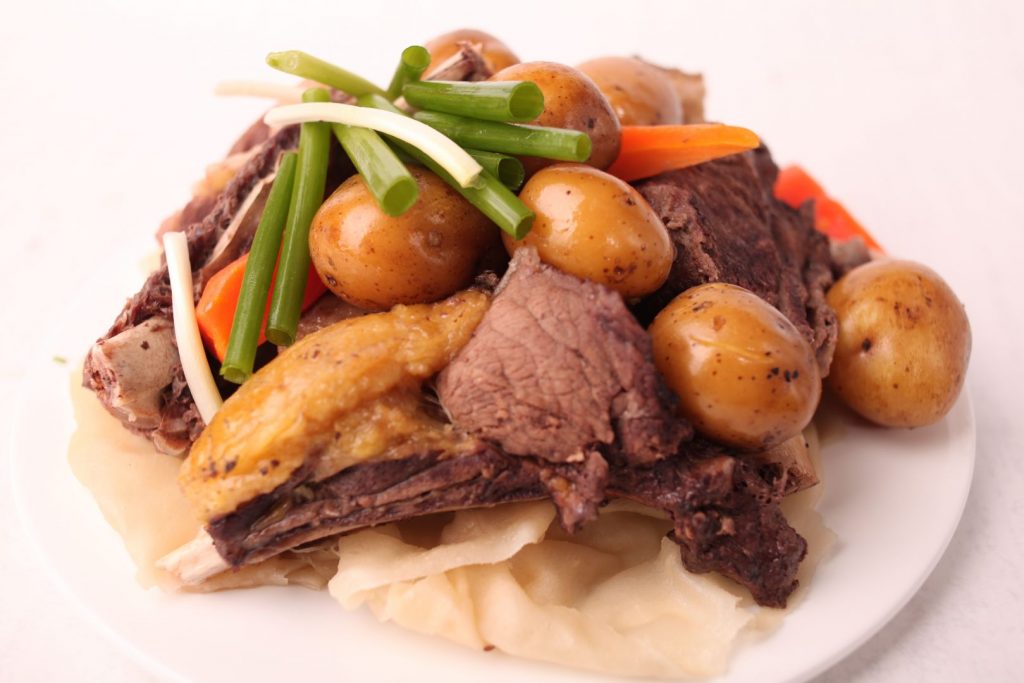
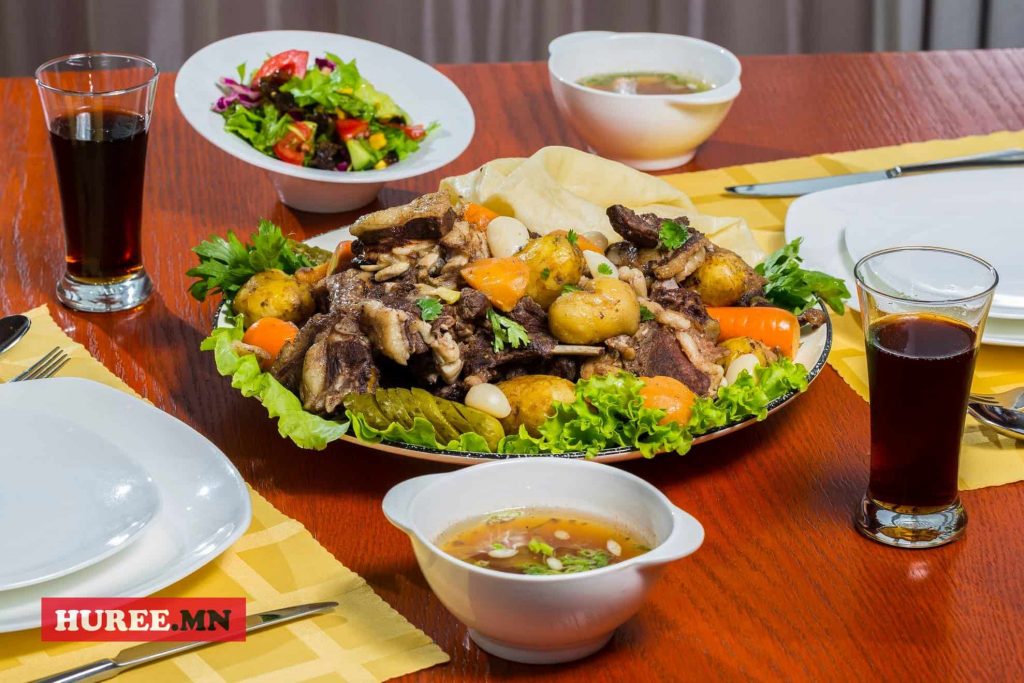

These were the 5 most common meals you’ll encounter on your trip in Mongolia.
Did it feel too meaty? There’s valid reason. Geographically, the Mongolian land has harsh winters with cold winds, and the best way for the nomads to sustain energy and get through the winter was to eat a lot of protein; it being from their livestock like sheep and goats. That’s why it’s very common to encounter meals with a lot of meat in Mongolia.
REMEMBER: After the hearty meals, make sure to thoroughly wipe your face and hands clean, then drink a warm tea or water, but never a cold drink or it might upset your stomach.

